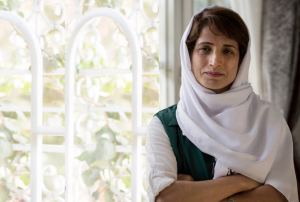by Joshua Kucera
Armenians poured into the streets of Yerevan on October 2, summoned by Prime Minister Nikol Pashinyan, who said that the country was at risk of a “counter-revolution” fomented by remnants of the regime he toppled in the spring. A day later, the situation remained in a standoff between Pashinyan and his opposition, and the crisis has posed the most dramatic challenge to Pashinyan’s “Velvet Revolution” in the five months he’s been in power.
So how did it come to this?
When Pashinyan was leading protests against the former administration in the spring, he made a four-part series of demands: the resignation of then-leader Serzh Sargsyan; the election of a new prime minister; a new election law; and new elections.
The first two were quickly implemented, with Pashinyan himself elected prime minister. The third is a work in progress, with some election reforms having already passed and others in the works. But it is the final step, the new parliamentary elections, that are supposed to cement the “revolution,” as Pashinyan calls it.
Until recently, Pashinyan and his team had suggested a wide range of times for the elections – from this fall to next spring – without setting a firm date. There were two primary, but contradictory, considerations, at play.
He wanted the elections as soon as possible, because his bloc in parliament held only nine out of 105 seats, and he was working with a tenuous coalition of allies of the old regime, including the Prosperous Armenia party, run by oligarch Gagik Tsarukyan, and the national stalwarts Armenian Revolutionary Federation (ARF).
But he also needed time: His party was still small, and in the last parliamentary elections it got only seven percent of the vote. While Pashinyan is himself wildly popular in Armenia, and that representation would certainly multiply manifold, elections still represented a risk.
Yerevan municipal elections in late September, however, resulted in a landslide victory for Pashinyan’s “My Step” slate, which took 81 percent of the vote. Encouraged by the result, Pashinyan moved to push ahead the election date; the day after the Yerevan elections he said that the parliamentary vote should take place “very quickly.”
This apparently triggered the “counter-revolution.” Led by the formerly ruling Republican Party of Armenia, lawmakers pushed ahead a vote to change the law on what would happen if parliament were to be prevented from meeting. Under the old rules, that would trigger new elections; the new law would remove that provision. The goal seemed to be to neutralize the threat of street protests, which could conceivably be deployed to block parliament, and which remain the most potent weapon in Pashinyan’s arsenal.
Most remarkably, the Republicans were joined by the MPs from Prosperous Armenia and the ARF. Pashinyan responded by firing all the ministers from those two parties, but it remains unclear why those parties chose this moment to turn against Pashinyan and again throw their lots in with the Republicans.
One factor could have been the prospect of their looming political death: Prosperous Armenia, which had been mooted as a potential spoiler for Pashinyan due to Tsarukyan’s popularity among many poor, rural Armenians, got only 7 percent in the Yerevan elections. The ARF did even worse, garnering less than 2 percent.
Whatever the case, Pashinyan now must rely again on mass people power. Pashinyan estimated that 10,000 people came out to parliament to support him on October 2, and if there is a genuine prospect of a “counter-revolution” it is not difficult to imagine crowds far greater than that taking to the streets again. While hints of cynicism are beginning to creep into Armenian political conversations, and there is some chance of protest fatigue, Pashinyan still remains very popular. Maybe more importantly, the old regime remains deeply hated, and any prospect of their return will certainly be vigorously opposed.
Pashinyan has promised to resign, which would force new elections in the parliament for a prime minister. If those fail, they would trigger new elections. Pashinyan appears to be playing a sort of political chicken, gambling that his opponents will be unable to muster support for an opposition candidate. The smart money would seem to favor him. But members of the old regime, along with their once and again allies, may see no need to back down, no matter the degree of public pressure. And they still retain many levers of power, including large swaths of the bureaucracy and at least tacit support from Moscow.
This may be the old regime’s last, desperate attempt to reverse their losses. Their odds may be slim, but they may feel they have nothing left to lose.
Joshua Kucera is the Turkey/Caucasus editor at Eurasianet, and author of The Bug Pit. Reprinted, with permission, from Eurasianet.





